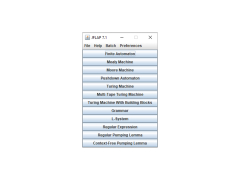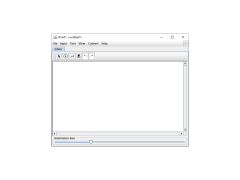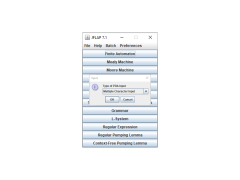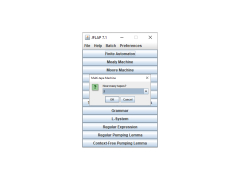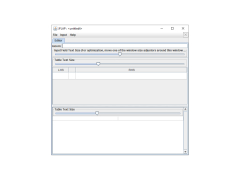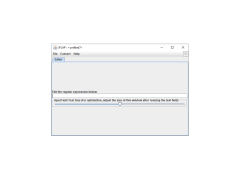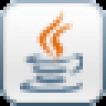
JFLAP
by Susan H. Rodger
JFLAP is a graphical tool for the creation, editing, and simulation of various types of automata and formal languages.
JFLAP (Java Formal Languages and Automata Package) is a software package designed to help students learn the basic concepts of formal languages and automata theory. This software package is a graphical, self-contained environment for experimenting with and learning about the behavior of formal languages and automata. It is developed by the Department of Computer Science at Duke University.
1.Simulation of Turing Machines: JFLAP provides an interactive graphical interface for creating and simulating Turing Machines. Students can construct machines, input a string, and then step through the machine to observe the behavior of the machine on the various operations.
2.Simulation of Finite Automata: JFLAP allows students to create and simulate Finite Automata. Finite Automata are represented in graphical form and students can input strings to observe how the automata respond to different inputs.
3.Simulation of Pushdown Automata: JFLAP provides an interactive graphical interface for constructing and simulating Pushdown Automata. Pushdown Automata are represented in graphical form and students can input strings to observe how the automata respond to different inputs.
4.Simulation of Grammars: JFLAP allows students to construct and simulate Grammars. Grammars are represented in graphical form and students can input strings to observe how the grammar behaves.
5.Simulation of Regular Expressions: JFLAP allows students to construct and simulate Regular Expressions. Regular Expressions are represented in graphical form and students can input strings to observe how the regular expressions behave.
6.Simulation of Context-Free Grammars: JFLAP allows students to construct and simulate Context-Free Grammars. Context-Free Grammars are represented in graphical form and students can input strings to observe how the context-free grammars behave.
7.Simulation of Recursive Descent Parsers: JFLAP allows students to construct and simulate Recursive Descent Parsers. Recursive Descent Parsers are represented in graphical form and students can input strings to observe how the recursive descent parsers behave.
8.Simulation of Lexers: JFLAP allows students to construct and simulate Lexers. Lexers are represented in graphical form and students can input strings to observe how the lexers behave.
9.Generation of Random Strings: JFLAP provides a feature for generating random strings. Students can generate strings according to a given grammar or regular expression.
10.Graphical Representation: JFLAP provides a graphical representation of formal languages and automata. This allows students to visualize the structure of the automata and the behavior of the machine on various operations.
11.Integration with Other Software: JFLAP can be integrated with other software packages such as Visual Basic and C++.
12.Online Documentation: JFLAP provides online documentation for users to refer to. The documentation covers topics such as installation, usage, and troubleshooting.
13.Cross-Platform Compatibility: JFLAP is compatible with Windows, Mac OS, and Linux operating systems.
14.Open-Source: JFLAP is an open-source software package and is freely available to download and use.
JFLAP allows users to quickly and easily create, simulate, and debug formal language and automata theory concepts.Features:
1.Simulation of Turing Machines: JFLAP provides an interactive graphical interface for creating and simulating Turing Machines. Students can construct machines, input a string, and then step through the machine to observe the behavior of the machine on the various operations.
2.Simulation of Finite Automata: JFLAP allows students to create and simulate Finite Automata. Finite Automata are represented in graphical form and students can input strings to observe how the automata respond to different inputs.
3.Simulation of Pushdown Automata: JFLAP provides an interactive graphical interface for constructing and simulating Pushdown Automata. Pushdown Automata are represented in graphical form and students can input strings to observe how the automata respond to different inputs.
4.Simulation of Grammars: JFLAP allows students to construct and simulate Grammars. Grammars are represented in graphical form and students can input strings to observe how the grammar behaves.
5.Simulation of Regular Expressions: JFLAP allows students to construct and simulate Regular Expressions. Regular Expressions are represented in graphical form and students can input strings to observe how the regular expressions behave.
6.Simulation of Context-Free Grammars: JFLAP allows students to construct and simulate Context-Free Grammars. Context-Free Grammars are represented in graphical form and students can input strings to observe how the context-free grammars behave.
7.Simulation of Recursive Descent Parsers: JFLAP allows students to construct and simulate Recursive Descent Parsers. Recursive Descent Parsers are represented in graphical form and students can input strings to observe how the recursive descent parsers behave.
8.Simulation of Lexers: JFLAP allows students to construct and simulate Lexers. Lexers are represented in graphical form and students can input strings to observe how the lexers behave.
9.Generation of Random Strings: JFLAP provides a feature for generating random strings. Students can generate strings according to a given grammar or regular expression.
10.Graphical Representation: JFLAP provides a graphical representation of formal languages and automata. This allows students to visualize the structure of the automata and the behavior of the machine on various operations.
11.Integration with Other Software: JFLAP can be integrated with other software packages such as Visual Basic and C++.
12.Online Documentation: JFLAP provides online documentation for users to refer to. The documentation covers topics such as installation, usage, and troubleshooting.
13.Cross-Platform Compatibility: JFLAP is compatible with Windows, Mac OS, and Linux operating systems.
14.Open-Source: JFLAP is an open-source software package and is freely available to download and use.
JFLAP requires Java 1.8 or higher to be installed on the user's computer. It is compatible with all major operating systems, including Windows, Mac OS X, and Linux.
PROS
Easy to understand interface for beginners in automata theory.
Offers visualization of theoretical concepts, improving comprehension.
Allows for experimentation and testing with various automata types.
Offers visualization of theoretical concepts, improving comprehension.
Allows for experimentation and testing with various automata types.
CONS
Can be complex for beginners to understand and use.
Lacks explanatory documentation for some features.
Limited file exporting options.
Lacks explanatory documentation for some features.
Limited file exporting options.
Archie Heile
JFLAP is a great software for exploring formal language and automata theory. It provides a user-friendly graphical interface to visualize, construct and simulate automata. I found it really useful when I was exploring the concept of Non-Deterministic Finite Automata. It also provides a great set of examples that help to understand the concepts. The software is very easy to use, and provides a detailed step-by-step guide to create the automata. The diagrams created in the software are also very helpful in understanding the algorithms. You can also debug your automata and view the trace table to see what is happening at each step. Overall, JFLAP is a great software for learning and exploring formal language and automata theory.
David Z.
JFLAP is a powerful and intuitive software for automata theory. It provides a graphical environment to help visualize and experiment with different types of automata. The user interface is well designed, making it easy to use and understand. It also has a variety of examples to help understand the concepts. The software is highly extendable, allowing users to create their own automata.
Ruaridh Lincicum
JFLAP is a tool that enables users to design, simulate and analyze automata, grammars and Turing machines. It includes features such as the ability to create and edit transition diagrams, test input strings against automata and grammars, and generate regular expressions. JFLAP also provides a debug mode to help users identify errors in their designs.
Logan U.
JFLAP software is a powerful tool for learning and experimenting with automata, grammars, and other formal language concepts.
Thomas
JFLAP is a cutting-edge software tool designed for experimenting with formal languages, automata, Turing machines and more. It boasts a versatile, user-friendly interface that simplifies the process of designing and testing computational models. One notable feature is its ability to visually transform grammars and automata into equivalent forms, which aids in understanding and teaching the concepts of these structures.
Lucas
It offers a variety of useful tools for designing and testing theoretical models of computation.
Jaxon
Intuitive interface, educational for automata theory learning.
Ethan
Intuitively educational.
Alex
JFLAP software good for automata stuff. Confusing at first. Helpful.
